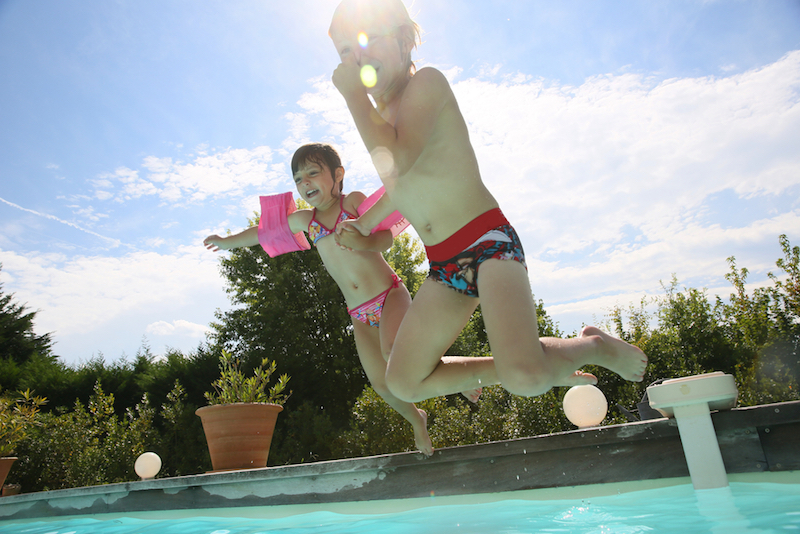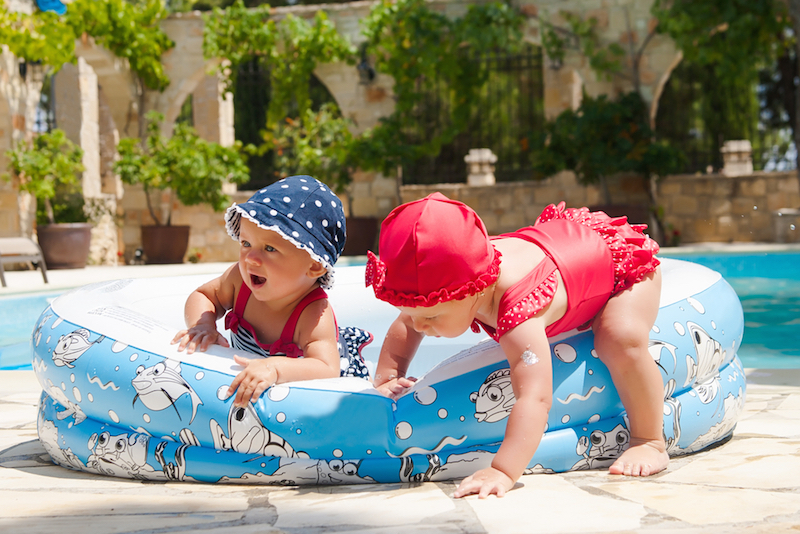Tips for Keeping Kids Safe in Swimming Pools

Taking a dip in the nearest swimming pool is a great way for a family to cool off on a hot day, but keeping a few safety precautions in mind can ensure that swimming is a fun activity where no one gets hurt.
Experts say the most important thing for adults to do is to keep a close watch on the water when kids are swimming. In fact, whether in a backyard or public pool, it's important to make sure an adult is paying full attention when kids are in the water, said Tracy Mehan, a health educator at the Center for Injury Research and Policy at Nationwide Children's Hospital in Columbus, Ohio. That means not talking on the phone, checking Facebook, sleeping, reading, doing chores or chatting with the neighbors, she said.
An adult needs to be fully engaged when kids, especially young children, are in a swimming pool, Mehan said. Very young children — who can move quickly and may not yet have a realistic sense of danger — need to stay within a hand's reach of an adult at the pool, she said.
"A young child can drown in as little as 1 inch of water," Mehan told Live Science, highlighting the potential dangers of kids being in and around a pool, even a small "kiddie" pool.
"Drowning is often quick, silent and final," Mehan said. It's important to keep the "silent" part in mind — people may assume they'll hear splashing or cries for help, but often times, there's little to no sound at all.
Children ages 1 to 4 have the highest rates of fatal drowning in swimming pools, according to the Centers for Disease Control and Prevention (CDC). Boys of all ages have a higher risk than girls, and African-American boys and girls ages 5 to 19 are six times more likely to drown in pools compared with white or Hispanic children, CDC researchers have found.
In addition, drowning risk may rise as more families turn to less expensive portable pools as an alternative to pricier in-ground pools, pool memberships and water park visits. These portable pools include wading pools, inflatable pools and "soft-sided, self-rising" pools that can be installed in the backyard and taken down at the end of the season. [9 Weird Ways Kids Can Get Hurt]
Get the world’s most fascinating discoveries delivered straight to your inbox.
Portable pools can be dangerous, according to a study by researchers at Nationwide Children's Hospital published in the journal Pediatrics in 2011. The findings showed that a child drowns in a portable pool every five days in the U.S. during the summer.
Because portable pools are small, inexpensive and easy to install, parents may not realize the risks of these pools, the researchers wrote in their findings.
The majority of drownings or near-drownings in portable pools involved children under age 5, and nearly three-quarter of these cases occurred in the child's own yard, the researchers found.
Pool safety tips
Despite these risks, there's no denying that children enjoy swimming, floating, kicking, playing games, jumping or diving into a pool. In addition to making sure there's always an adult present who is paying attention when kids are in or near the water, here are nine more tips for keeping kids safe at the swimming pool.
- Fencing adds an important layer of protection around pools, in addition to an adult's watchful eye. "The safest way to prevent drowning is to have four-sided fencing around the pool that is at least 4 feet high," Mehan said. The house should not be considered one of the four sides because it does not block pool access, she said. Four-sided fencing should also have a self-closing, self-latching gate, she added.
Follow Live Science @livescience, Facebook & Google+. Originally published on Live Science.
Cari Nierenberg has been writing about health and wellness topics for online news outlets and print publications for more than two decades. Her work has been published by Live Science, The Washington Post, WebMD, Scientific American, among others. She has a Bachelor of Science degree in nutrition from Cornell University and a Master of Science degree in Nutrition and Communication from Boston University.



